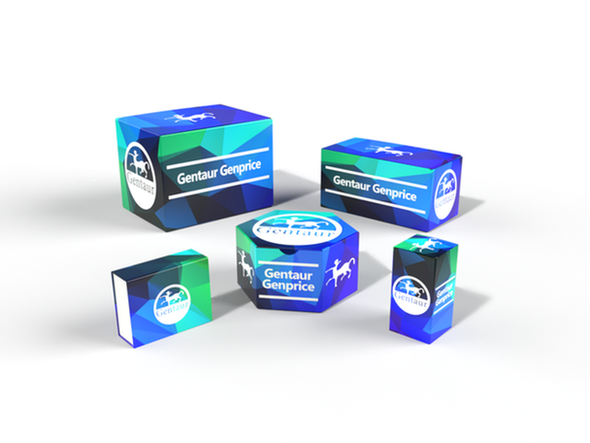Description
ARID3C Antibody | 26-522 | Gentaur UK, US & Europe Distribution
Host: Rabbit
Reactivity: Human, Mouse, Rat
Homology: N/A
Immunogen: Antibody produced in rabbits immunized with a synthetic peptide corresponding a region of human ARID3C.
Research Area: Transcription
Tested Application: E, WB
Application: ARID3C antibody can be used for detection of ARID3C by ELISA at 1:1562500. ARID3C antibody can be used for detection of ARID3C by western blot at 1 μg/mL, and HRP conjugated secondary antibody should be diluted 1:50, 000 - 100, 000.
Specificiy: N/A
Positive Control 1: Cat. No. 1201 - HeLa Cell Lysate
Positive Control 2: N/A
Positive Control 3: N/A
Positive Control 4: N/A
Positive Control 5: N/A
Positive Control 6: N/A
Molecular Weight: 44 kDa
Validation: N/A
Isoform: N/A
Purification: Antibody is purified by peptide affinity chromatography method.
Clonality: Polyclonal
Clone: N/A
Isotype: N/A
Conjugate: Unconjugated
Physical State: Liquid
Buffer: Purified antibody supplied in 1x PBS buffer with 0.09% (w/v) sodium azide and 2% sucrose.
Concentration: batch dependent
Storage Condition: For short periods of storage (days) store at 4˚C. For longer periods of storage, store ARID3C antibody at -20˚C. As with any antibody avoid repeat freeze-thaw cycles.
Alternate Name: ARID3C,
User Note: Optimal dilutions for each application to be determined by the researcher.
BACKGROUND: ARID3C is a member of the ARID (AT-rich interaction domain) family of proteins. The ARID domain is a helix-turn-helix motif-based DNA-binding domain. ARID family members have roles in embryonic patterning, cell lineage gene regulation, cell cycle control, transcriptional regulation and possibly in chromatin structure modification.This gene is a member of the ARID (AT-rich interaction domain) family of proteins. The ARID domain is a helix-turn-helix motif-based DNA-binding domain. ARID family members have roles in embryonic patterning, cell lineage gene regulation, cell cycle control, transcriptional regulation and possibly in chromatin structure modification.






